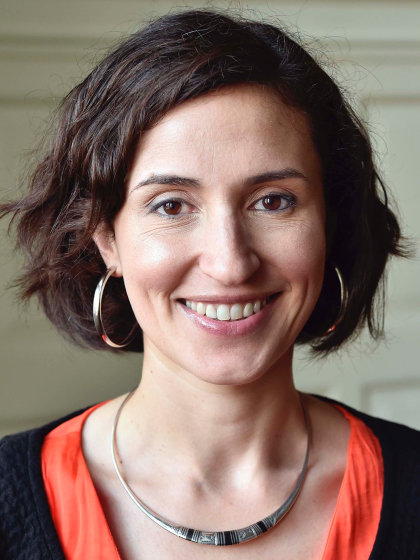M. (Manuela) Vecchi, Prof

I am the PI of the NWO-funded project "Cosmic ray antideuterons as a probe for new physics".
Antideuterons have never been detected in Cosmic Rays (CR). Their discovery would dramatically change our present knowledge of antimatter in the universe, with groundbreaking consequences for early-universe cosmology and high-energy physics. The unique strength of a possible discovery of antideuterons lies in their very low level of astrophysical background, i.e. the flux of antinuclei generated when CR protons and antiprotons hit the interstellar medium, which is kinematically suppressed with respect to the primary signal that could be produced in the annihilation or decay of Dark Matter (DM) particles in the galaxy. In particular, the energy region around 1 GeV/n offers a nearly background-free search window.
The detection of antideuterons is within the reach of the Alpha Magnetic Spectrometer (AMS-02), a CR detector taking data on the International Space Station (ISS) since 2011, planning to continue operations until 2024, and beyond.
I propose to carry out the analysis of the data collected by AMS-02, searching for the CR antideuterons. I am a member of the AMS-02 collaboration since 2011, and my group and myself have full access to the data, and to the whole analysis pipeline. The goal of this project is twofold: perform the first-ever detection of CR antideuterons with the AMS-02 experiment, and understand the implications of the result in terms of DM and early-universe cosmology.
I am co-I of the NWO-funded project "A major Dutch contribution to CTA by building cameras for this next generation gamma-ray observatory" lead by Jacco Vink (UvA).
The Universe teems with cosmic rays: subatomic particles accelerated in explosive cosmic events or objects powered by strong gravity. Over a century after their discovery, the sources of cosmic rays have still not been unambiguously identified, as they do not travel in straight paths. However, upon colliding with matter and radiation, cosmic rays produce very-high-energy (VHE) gamma-rays that point directly back to their distant birthplaces. These gamma-rays carry the key to some of the deepest questions about our Universe, and offer a census of the objects where the extremes of matter rule, such as black holes, neutron stars, or their gravitational-wave producing merger events. VHE gamma-rays also promise to reveal the true nature of dark matter.
In studying these gamma-rays, the planned Cherenkov Telescope Array (CTA) will be a game-changer as the most sensitive VHE gamma-ray observatory for photon energies from 20 GeV up to 300 TeV. It will outperform current ground-based facilities by an order of magnitude, and space-based missions by over four orders of magnitude for transient astrophysical events. CTA will reveal the full range of cosmic-ray sources, working in synergy with neutrino detectors that observe ‘sister particles’ produced in the same interactions. CTA will also reveal whether the newly discovered gravitational wave events are cosmic-ray accelerators, and probe the current landscape of dark matter models.
The aim of this proposal is to invest in instrument building for CTA on a level sufficient to secure membership for the Netherlands, allowing Dutch astronomers and physicists to participate in its science yield. CTA also offers important synergies with the Dutch national roadmap facilities: SKA, Athena, the Einstein Telescope and KM3NeT. Our proposed contribution is the natural continuation of prior Dutch investments in prototyping CTA cameras, and in co-defining the CTA science case.
We propose to participate in the building of the cameras for the initial array of 50 small-sized telescopes, together with a consortium of institutes in Germany, the UK, Japan and Australia. The Netherlands will be responsible for 1) production of the focal plane units, 2) calibration coordination, 3) camera software and 4) pointing reconstruction software.
